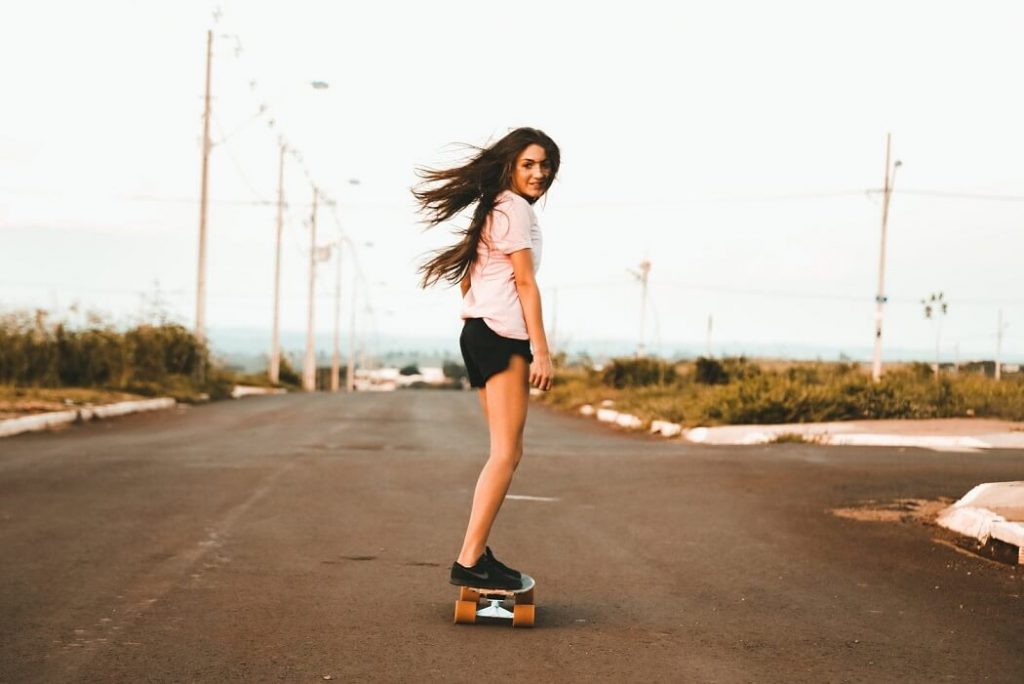Skateboarding is more than just a sport; it’s a thrilling and expressive form of self-expression that allows you to carve your path through the world. Whether you’re a beginner trying to stay upright or an experienced skater seeking to push your limits, there’s always room for improvement. So, if you’re eager to up your skateboarding game, here are some invaluable tips and information to help you ride your way to success.
Easy Skateboard Tricks
| Tips | Description |
|---|---|
| 1. Get the Right Gear | Invest in a quality skateboard and safety gear. |
| 2. Learn Proper Stance | Find your comfortable stance – regular or goofy. |
| 3. Master the Basics | Practice riding, turning, and stopping for control. |
| 4. Balance is Key | Focus on balance, a fundamental skill in skateboarding. |
| 5. Push, Push, Push | Learn proper pushing techniques for smooth movement. |
| 6. Start with Flat Ground Tricks | Begin with ollies, kickflips, and heelflips. |
| 7. Practice Regularly | Consistent practice is essential for improvement. |
| 8. Learn from Others | Watch professional skaters for inspiration and techniques. |
| 9. Find a Skating Community | Join local skate groups for support. |
| 10. Embrace Failure | Learn from falls and use them as learning experiences. |
| 11. Set Goals | Plan and set goals to track your progress. |
| 12. Explore Different Terrain | Try skating on various surfaces. |
| 13. Stay Patient | Progress may be slow, but persistence is key. |
| 14. Record Your Sessions | Film your sessions to analyze and improve your skills. |
| 15. Respect Others and the Environment | Be courteous and responsible while skating. |
Use this table as a quick reference guide to help you improve your skateboarding skills.
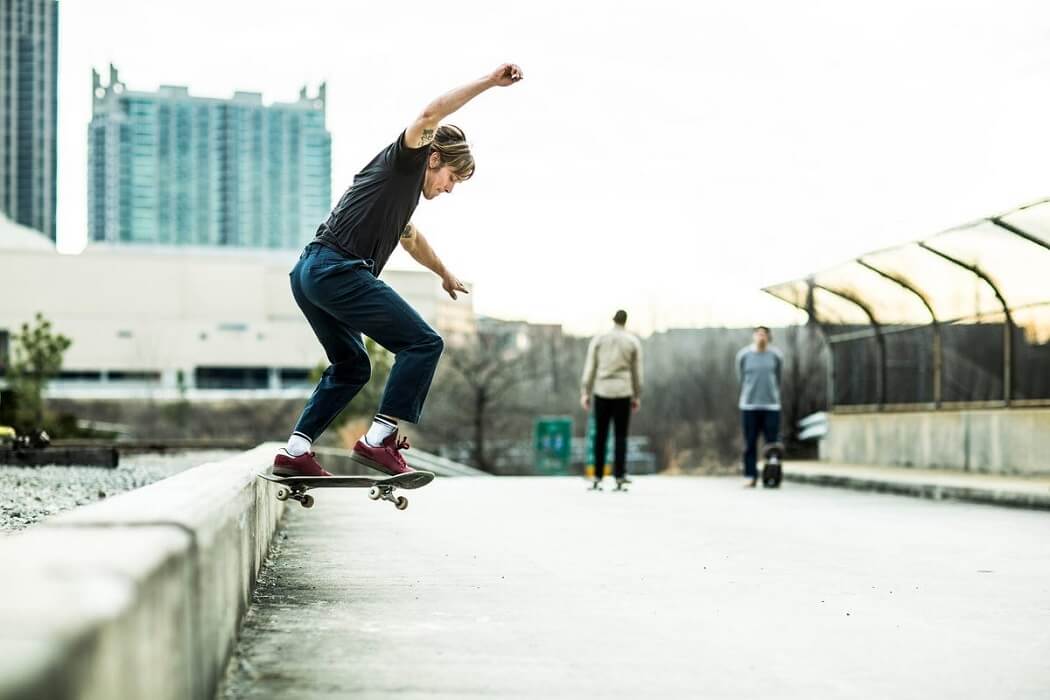
Skateboard Tricks For Beginners
- Get the Right Gear;
- Learn Proper Stance;
- Master the Basics;
- Balance is Key;
- Push, Push, Push;
- Start with Flat Ground Tricks;
- Practice Regularly;
- Learn from Others;
- Find a Skating Community;
- Embrace Failure;
- Set Goals;
- Explore Different Terrain;
- Stay Patient;
- Record Your Sessions;
- Respect Others and the Environment.
Skateboarding is an art form that allows you to express your unique style and creativity. Remember that there’s no one “right” way to skate; it’s all about finding your groove and enjoying the ride. So, strap on your helmet, hop on your board, and let the pavement be your canvas as you embark on a thrilling journey to become a better skateboarder.
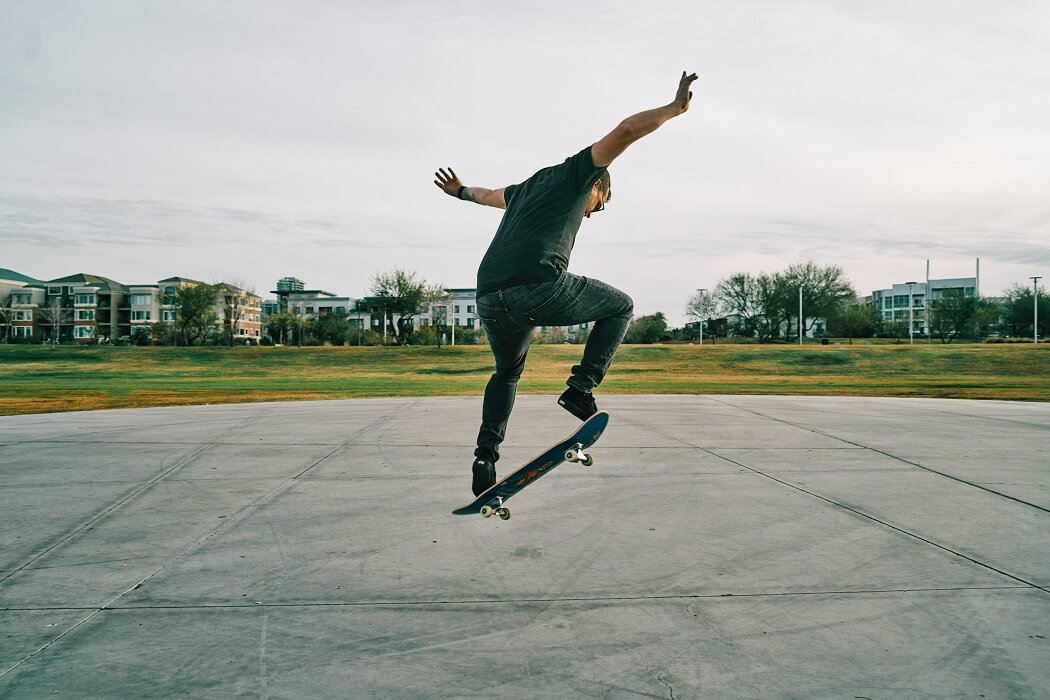
Get the Right Gear
The foundation of any skateboarding journey starts with the right equipment. Invest in a good quality skateboard that suits your style, and make sure it’s the right size for you. Don’t forget safety gear! Helmets, knee pads, elbow pads, and wrist guards are your best friends on the road to improvement. Safety first, always. Getting the right gear is akin to choosing your trusty sidekick on your skateboarding journey. It’s the foundation upon which your skills are built, and it can make or break your experience. Investing in a quality skateboard tailored to your preferences and body size is crucial.
The right deck, trucks, and wheels can significantly impact your performance and comfort on the board. Equally important is safety gear; helmets, knee pads, elbow pads, and wrist guards are your first line of defense against inevitable spills and falls. Safety should always come first in skateboarding, ensuring you can push your limits with confidence and style. So, before you embark on your skateboarding adventure, remember: getting the right gear isn’t just a choice; it’s your passport to the thrilling world of skateboarding.
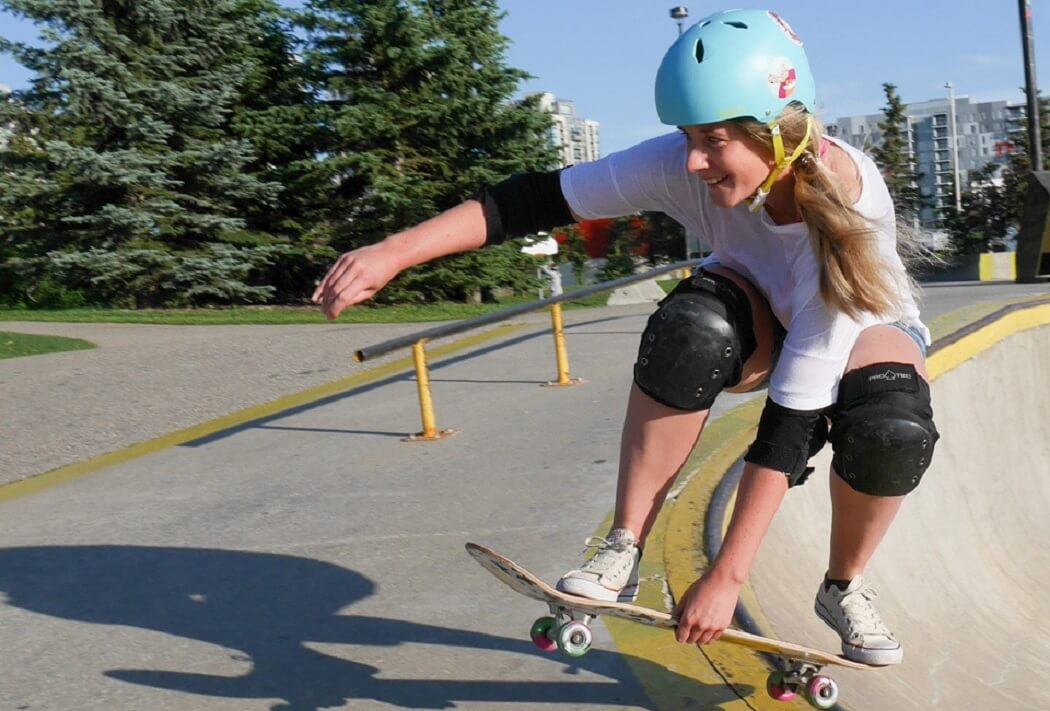
Learn Proper Stance
Whether you’re regular-footed or goofy, finding your comfortable stance is essential. Experiment with both to see which feels natural. Your dominant foot will be your back foot. Learning the proper stance in skateboarding is like discovering the beat in a dance; it sets the rhythm for everything that follows. Whether you find yourself more comfortable riding regular or goofy, finding your unique stance is a fundamental step.
This stance dictates which foot leads and which follows, and it’s a decision that profoundly impacts your balance and control on the board. So, experiment with both to determine which feels most natural for you. Once you’ve found your sweet spot, it becomes the foundation upon which you’ll build your skateboarding skills, allowing you to confidently navigate the world on four wheels and a wooden deck.
Master the Basics
Before attempting fancy tricks, make sure you’ve mastered the fundamentals. Practice riding, turning, and stopping until you feel confident and in control of your board. Mastering the basics of skateboarding is akin to learning the alphabet before diving into literature. It’s the essential vocabulary you’ll need to express yourself on the board with finesse. From the art of maintaining balance while cruising to executing seamless turns and mastering the art of stopping without a hitch, these foundational skills are the building blocks of skateboarding proficiency.
They lay the groundwork for more complex tricks and maneuvers, and they instill a profound sense of control and confidence. So, embrace these basics with enthusiasm, for they are the keys that unlock the door to a world of endless possibilities on your skateboard, where style and skill converge in perfect harmony.

Balance is Key
Skateboarding is all about balance. Spend time just standing on your board, shifting your weight, and getting a feel for the deck beneath your feet. Balance is the bedrock upon which every successful skateboarder’s journey is built. Much like a tightrope walker finds equilibrium, a skater’s finesse lies in their ability to maintain equilibrium on four tiny wheels. It’s a delicate dance between gravity and control, where every subtle shift in weight can mean the difference between a smooth ride and a sudden spill.
Developing exceptional balance is not just a skill, but an ongoing practice that requires patience and perseverance. As you ride, push, and perform tricks, your body learns to adapt and find equilibrium in the most unexpected of situations. Ultimately, it’s this mastery of balance that allows skateboarders to push the boundaries of what’s possible on their decks, turning sidewalks and skate parks into canvases of fluid motion and gravity-defying stunts.
Push, Push, Push
Learn the proper way to push off the ground. A good push keeps you rolling smoothly and helps you maintain speed. The act of pushing on a skateboard is like the heartbeat of your ride, propelling you forward and giving life to your journey. Pushing efficiently is not just about moving from point A to B; it’s about mastering the rhythm, the timing, and the technique. A well-executed push is a symphony of coordinated movements, involving your back foot providing the power and your front foot guiding the way.
It’s the art of finding that perfect balance between speed and control. A skilled skateboarder can turn a series of pushes into a seamless, almost dance-like motion, transforming the sidewalk into a canvas where every stride is a brushstroke, and the streets become a masterpiece of perpetual motion. So, remember, push, push, push – not just to get where you’re going, but to add a touch of finesse and flair to your skateboarding experience.
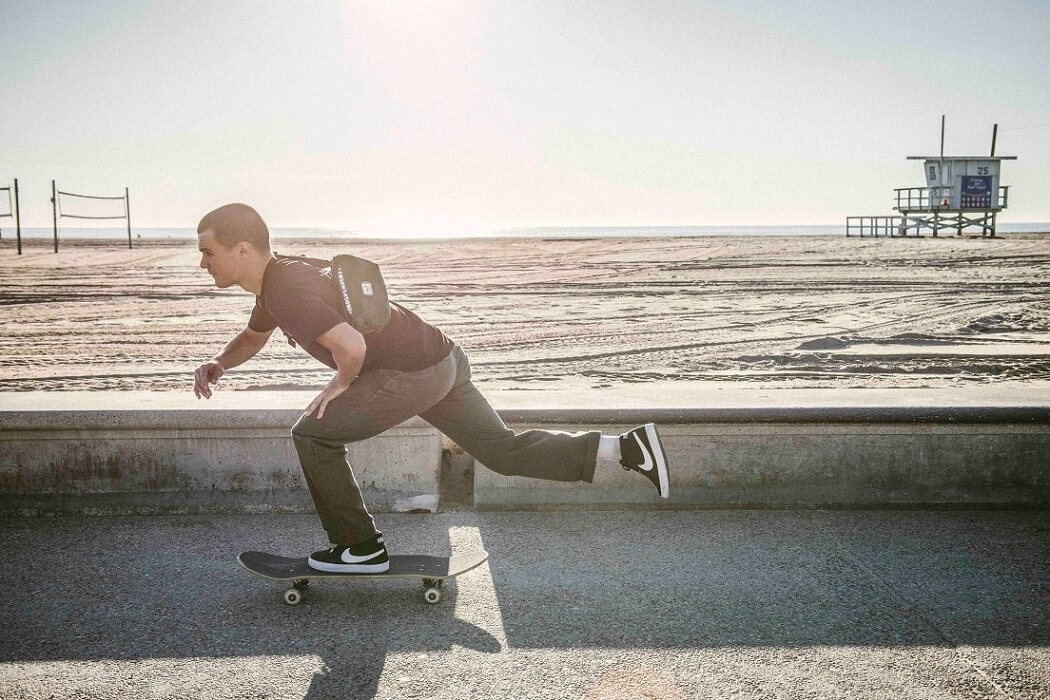
Start with Flat Ground Tricks
Begin your trick repertoire with flat-ground tricks like ollies, kickflips, and heelflips. These provide a strong foundation for more advanced maneuvers. Starting your skateboarding journey with flat-ground tricks is akin to learning your ABCs before writing a novel. These fundamental tricks, including ollies, kickflips, and heelflips, are the cornerstone of your skateboarding skillset. They teach you balance, board control, and the mechanics of popping and flicking your deck.
Mastering these tricks on flat ground provides a solid foundation for more complex maneuvers, whether you’re navigating the streets, hitting the skate park, or tackling obstacles. Flat-ground tricks not only hone your technique but also ignite your passion for skateboarding, setting the stage for an exciting and ever-evolving journey where creativity knows no bounds. So, embrace the thrill of mastering these basics, for they are the stepping stones to an exhilarating world of skateboarding possibilities.
Practice Regularly
Consistency is vital. Skate as often as you can, even if it’s just for a few minutes each day. The more time you spend on your board, the better you’ll become. In the world of skateboarding, there’s an unwavering truth: practice makes progress. Regular practice is the crucible where raw talent is forged into refined skill. The more you roll on your board, the more attuned you become to its nuances, your balance improves, and your confidence soars. It’s about repetition, refinement, and relentless dedication. Regular sessions at the skate park or on your local streets not only build muscle memory but also nurture your intuition, allowing you to anticipate movements and reactions instinctively. As you push your boundaries, each session becomes a canvas for self-expression, a space where you can challenge yourself, learn from your mistakes, and savor the exhilaration of progress. So, carve out time in your life for skateboarding, and watch as your commitment to regular practice transforms you into a skater with ever-evolving skills and a passion that knows no bounds.
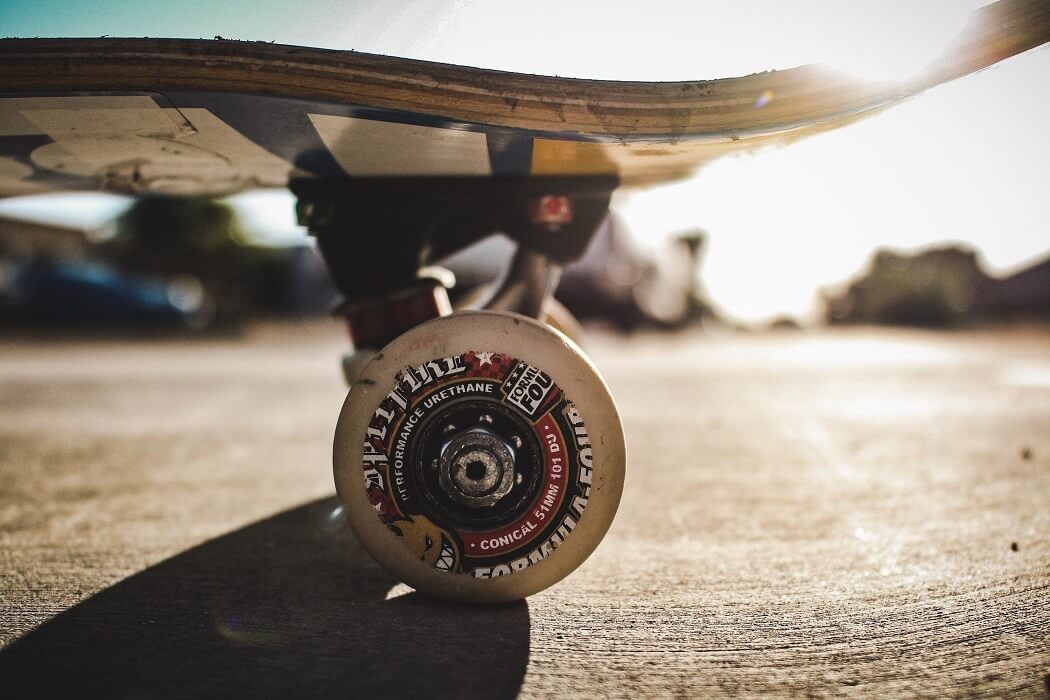
Learn from Other
Watch videos of professional skaters to understand their techniques and style. It’s a great way to get inspiration and learn new tricks. Learning from others is like tapping into a treasure trove of knowledge and inspiration in the world of skateboarding. It’s about recognizing that skateboarding is a community, a culture built on shared experiences and wisdom. By watching and interacting with fellow skaters, both beginners and seasoned pros, you open yourself up to a wealth of techniques, styles, and creative approaches that you might not have discovered on your own.
Every skater has a unique story to tell on their board, and by observing their moves and listening to their advice, you can adapt and incorporate those elements into your own skateboarding journey. Learning from others is a testament to the communal spirit of skateboarding, where every session becomes a chance to connect, share, and inspire, ultimately enriching your experience and expanding your repertoire of tricks and skills. So, remember, there’s always something to learn from others, making skateboarding not just a sport but a lifelong journey of growth and camaraderie.
Find a Skating Community
Join local skateboarding groups or communities. Learning with others can be motivating, and you can exchange tips and advice. Finding a skating community is like discovering a second family, one bonded by a shared love for the art of skateboarding. These communities provide more than just support; they become your skateboarding sanctuary, a place where you can grow, learn, and connect with like-minded individuals.
Whether you join a local skate crew, participate in skate events, or engage with online forums and social media groups, being part of a skating community opens doors to friendships, mentorships, and a wealth of collective knowledge. Together, you celebrate triumphs, navigate challenges, and motivate each other to push your limits. These communities breathe life into the vibrant culture of skateboarding, reminding you that you’re not just rolling on wheels; you’re part of a global tribe, united by a passion for the freedom and creativity that skateboarding embodies.
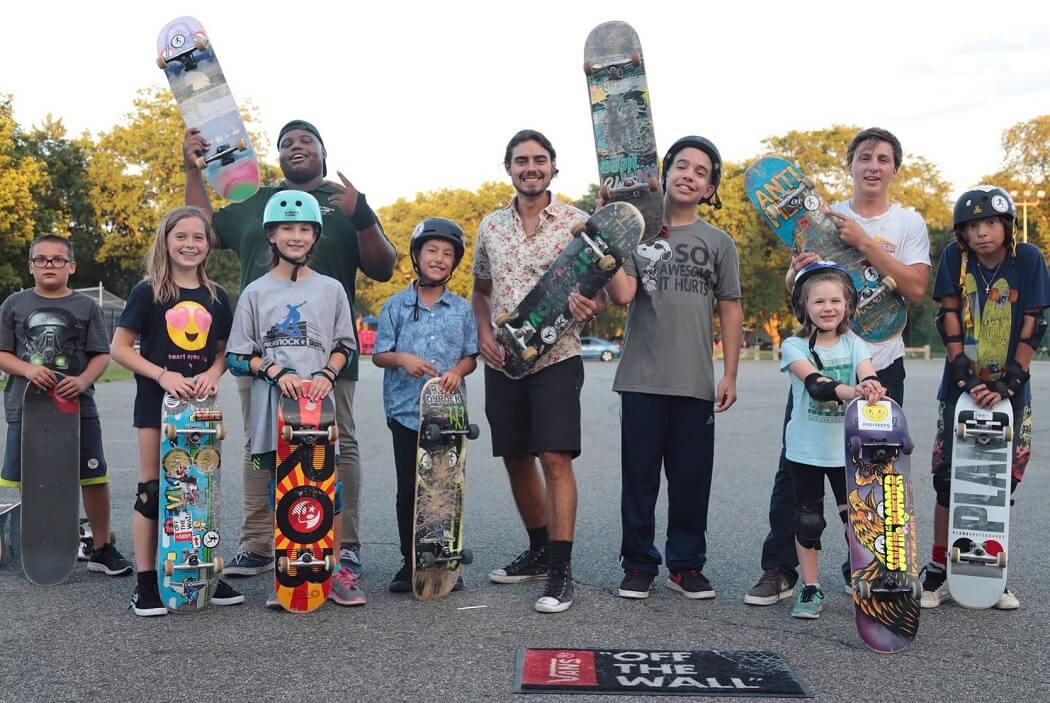
Embrace Failure
Falling is part of skateboarding. Don’t be discouraged by spills and scrapes; instead, use them as learning experiences to improve your skills. Embracing failure in skateboarding is akin to understanding that every fall is a stepping stone toward success. It’s an integral part of the learning process, a rite of passage that every skateboarder must endure. In those moments when you hit the pavement, you’re not failing; you’re learning resilience, adaptability, and determination.
Each stumble is a lesson in perseverance, teaching you to rise stronger, refine your technique, and tackle challenges head-on. Embracing failure isn’t a sign of weakness; it’s a badge of courage that separates true skateboarders from the rest. It’s a reminder that success is sweeter when you’ve tasted defeat, and it’s the grit and determination forged through failure that propels you to new heights on your skateboard. So, wear your scrapes and bruises with pride, for they are the marks of a skater on a relentless quest for improvement and self-discovery.
Set Goals
Have a clear plan for what you want to achieve. Whether it’s conquering a new trick or mastering a specific style, setting goals will keep you motivated. Setting goals in skateboarding is like charting a course on a limitless sea of possibilities. These goals become your guiding stars, illuminating your path and driving your progression in the sport. Whether you aim to master a specific trick, conquer a challenging ramp, or simply refine your style, setting clear objectives gives your skateboarding journey purpose and direction.
Goals provide motivation, discipline, and a sense of accomplishment as you work diligently to achieve them. They transform your skateboarding sessions into purposeful pursuits, each trick attempted or obstacle overcome bringing you one step closer to your aspirations. By setting goals in skateboarding, you turn your passion into a personal adventure of growth and achievement, making the journey just as rewarding as the destination.

Explore Different Terrain
Skateboarding isn’t limited to skate parks. Explore different terrains like streets, ramps, and bowls to diversify your skills. Exploring different terrains in skateboarding is akin to embarking on an adventurous odyssey where every surface becomes a canvas for creativity. While the skatepark might be your familiar playground, venturing into new environments introduces fresh challenges and expands your skill set. Streets, stairs, ramps, bowls, and even urban architecture offer unique experiences and obstacles to conquer.
The diversity of terrains fuels your adaptability and inventiveness, turning mundane landscapes into opportunities for exhilarating expression. By broadening your horizons, you cultivate versatility and the ability to adapt your skating style to any setting, allowing you to truly make skateboarding an art form that thrives wherever you roll. So, don’t confine yourself to a single backdrop; instead, let every terrain become a chapter in your skateboarding story, enriching your skills and making each session a thrilling adventure.
Stay Patient
Progress may be slow at times, but perseverance pays off. Keep your passion alive and remember why you started skateboarding in the first place. Patience is the steadfast companion of every skateboarder on their journey to mastery. In the world of skateboarding, progress is not always immediate; it’s a gradual, often incremental process. Staying patient means understanding that excellence is born from perseverance and that every failed attempt is a stepping stone toward success.
Whether you’re trying to nail a new trick or overcome a challenging obstacle, impatience can be your greatest adversary. Instead, it’s the patience to endure countless repetitions, to embrace the grind, and to recognize that setbacks are lessons in disguise that ultimately shape you into a more skillful and resilient skater. It’s a reminder that the thrill of skateboarding is not just in the destination but in the journey itself, where patience becomes a virtue that transforms passion into proficiency.
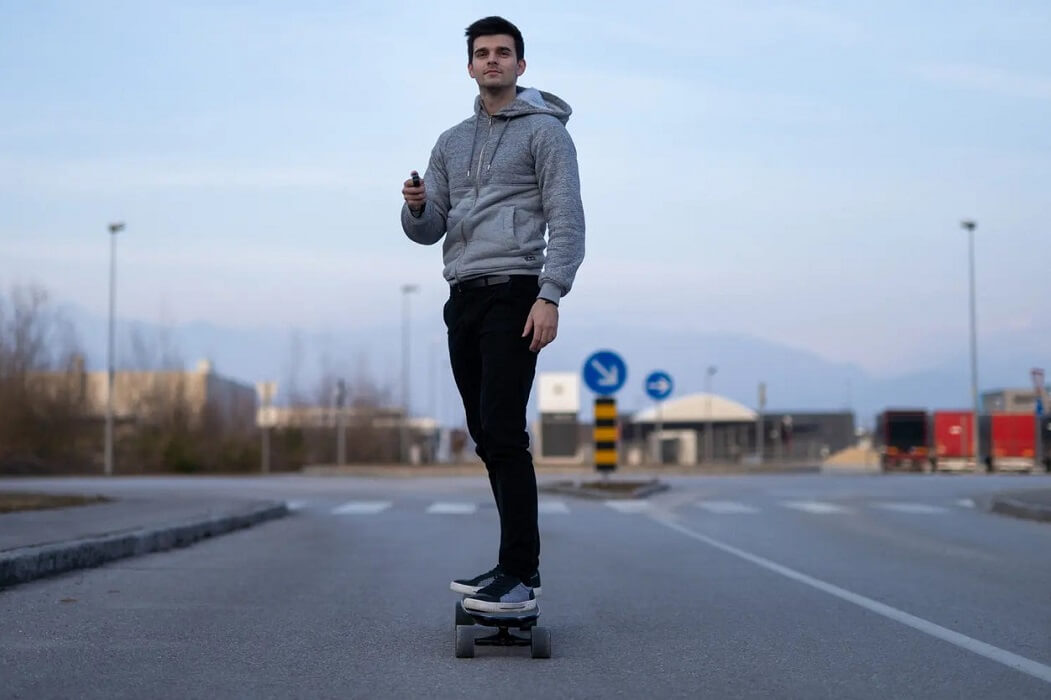
Record Your Sessions
Recording your skate sessions can be incredibly helpful. Watching your footage allows you to analyze your techniques, identify areas for improvement, and track your progress. Recording your skateboarding sessions is like capturing a precious journal of your progress, an invaluable tool for growth and self-assessment. Whether through video or photographs, documenting your time on the board allows you to see your movements, analyze your techniques, and pinpoint areas for improvement with a critical eye.
It’s like having a coach at your side, providing valuable feedback that can help you refine your skills and perfect your tricks. Beyond the analytical benefits, these recordings become cherished memories, a visual diary of your skateboarding journey that you can look back on with nostalgia and pride. So, make it a habit to hit the record button – not only to fine-tune your skateboarding prowess but to immortalize the exhilarating moments that define your passion for this dynamic and ever-evolving sport.
Respect Others and the Environment
Be courteous to pedestrians and other skaters. Respect the places you skate, and always clean up after yourself. Respect for others and the environment is the ethical compass that guides every conscientious skateboarder. It’s a commitment to preserving the harmony between the skateboarding community and the world we inhabit. Skateboarding in public spaces comes with a responsibility to be courteous to pedestrians, cyclists, and fellow skaters, ensuring their safety and comfort.
Beyond that, it’s about leaving no trace—cleaning up after ourselves, picking up litter, and treating every spot we skate as if it were our own backyard. This ethos not only fosters goodwill but also ensures that we can continue to enjoy the privilege of skating in diverse urban landscapes. Respect for others and the environment isn’t just a rule; it’s a testament to the camaraderie and stewardship that define the spirit of skateboarding, ensuring that our passion remains sustainable and harmonious for generations to come.
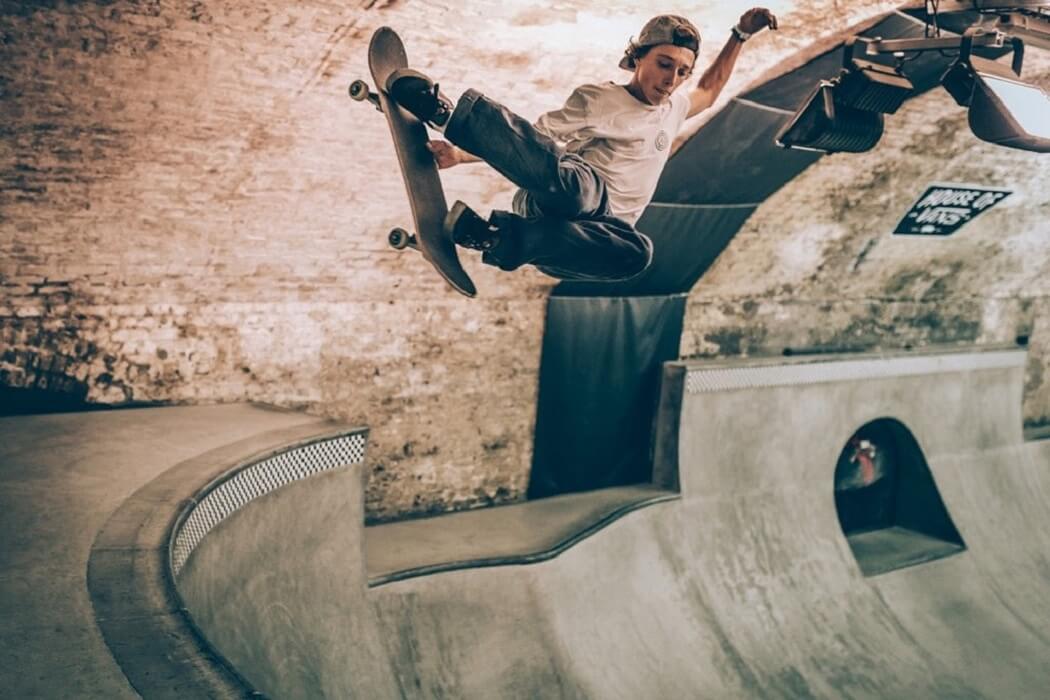
Conclusion
In conclusion, the world of skateboarding is a thrilling and dynamic realm, where both novices and experts can find endless joy and self-expression. For beginners, mastering the basics and gradually progressing to more complex tricks is not just a journey; it’s an art form in itself. From the pivotal “ollie” to the mesmerizing kickflips and heelflips, these foundational tricks open doors to a universe of creative possibilities.
Embracing patience, resilience, and a passion for learning is the key to success on this exhilarating ride. And remember, it’s not just about conquering the tricks; it’s about the personal growth, camaraderie, and the pure joy that comes with every push and pop of the skateboard. So, strap on your helmet, lace up your shoes, and let the pavement be your canvas as you embark on this exciting journey of skateboarding, where the only limits are the ones you set for yourself.
How to Skateboard for Beginners Video
FAQ
Q: What type of skateboard should I get as a beginner?
A: It’s best to start with a standard skateboard. Look for a deck size that suits your body and style. Brands like Element, Plan B, and Enjoi offer quality beginner options.
Q: Do I need to wear safety gear?
A: Absolutely! Safety gear is crucial. Always wear a helmet, knee pads, elbow pads, and wrist guards. These protect you from injuries and give you the confidence to try new tricks.
Q: How do I find my comfortable stance, regular or goofy?
A: Experiment by standing on your board both ways. Whichever feels more natural with your dominant foot forward is your stance. Regular means left foot forward; goofy means right foot forward.
Q: What are some essential flat ground tricks to learn first?
A: Start with the basics like ollies, kickflips, and heelflips. Mastering these will build your foundation for more advanced tricks.
Q: How often should I practice?
A: Practice regularly, ideally daily or several times a week. Consistency is key to improvement in skateboarding.
Q: What if I'm struggling to learn a particular trick?
A: Be patient and keep trying. It’s normal to face challenges. Break the trick into smaller steps, watch tutorials, and seek advice from experienced skaters.
Q: How can I join a local skating community?
A: Check online forums, and social media groups, or visit your local skate park. You’ll likely find like-minded skaters eager to welcome newcomers.
Q: How can I record my skateboarding sessions?
A: Use a smartphone or action camera mounted on a tripod or held by a friend. Capture your tricks and review them to identify areas for improvement.
Q: Are there any specific etiquette rules I should follow while skateboarding?
A: Yes, always be respectful of pedestrians, cyclists, and other skaters. Observe “skatepark etiquette,” wait your turn, and clean up after yourself.
Q: What's the most important piece of advice for beginners?
A: Have fun and enjoy the journey. Skateboarding is about self-expression, creativity, and personal growth. Embrace the process, and don’t be afraid to push your limits while staying safe.
